A Story Begging to Be Written
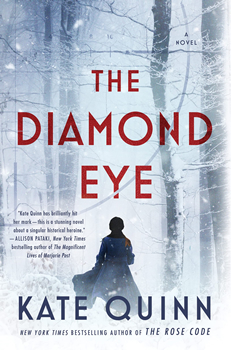 By Esme Addison
By Esme Addison
In THE DIAMOND EYE, New York Times bestselling author Kate Quinn brings us a haunting World War II story about a quiet librarian who becomes the most deadly female sniper in history.
In this gripping historical thriller, readers follow bookish history student and young mom Mila Pavlichenko, whose world is turned upside down when Hitler invades Ukraine and Russia. Given a rifle and sent to join the fight, Mila must reinvent herself as a lethal hunter of Nazis—otherwise known as Lady Death.
Based on a true story, THE DIAMOND EYE is a stunning novel of heroism, of a mother who became a soldier, of a woman who changed the course of history forever.
In this exclusive interview with The Big Thrill, Quinn shares more about why she wrote this book, and how she got into the head of a deadly sniper.
Thank you for taking the time to discuss your latest book, THE DIAMOND EYE. I thought this was an amazing read about a real hero, and you did a wonderful job bringing her to life. So let’s jump right in. Why did you decide to write your story about Lyudmila Pavlichenko?
A WWII woman sniper who became BFFs with First Lady Eleanor Roosevelt? The story positively begged to be written!
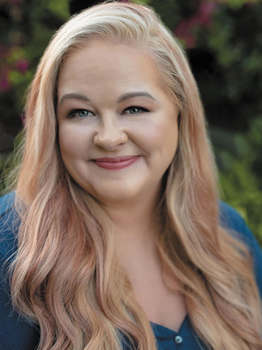
Photo credit: Laura Jucha Photography
What do you think Mila would think of the Russian invasion of Ukraine?
I think she’d be one of these brave defenders we’ve been reading so much about in the news lately. Even if Mila fought for the Soviet Union in her day, she was still a Ukrainian heroine, and her battles were all on Ukrainian soil, in defense of Ukrainian civilians. I’ve been delighted to see how Ukraine has claimed her as one of their own—anytime you see an article about her online (“Famous Russian Female Sniper Lady Death!”) one of the first comments you’ll see underneath it is “She was UKRAINIAN.” So I’m glad Ukraine takes pride in her—they are certainly in a position to take pride in their military heroes at the moment, and in the fighting spirit which lived in Mila and lives on in Ukraine’s modern-day defenders.
How did you get into the head of a sniper? Tell me about your research.
Lyudmila Pavlichenko wrote her memoirs later in life, and those were a godsend. She’s very specific about what it was like to do a sniper’s work. I was surprised by how much science is involved: it’s not just about pulling a trigger: You have to understand ballistics tables and lateral drift, how to calculate distance and angle, how to compensate for wind speed—and for really long shots, even the spin of the Earth. Even so, being a successful sniper wasn’t really about making impossible long-distance shots—it was much more mental and emotional. You had to have the internal toughness to be able to lie still for hours without moving, wait in shadows for the perfect opportunity, work mostly alone—all for the chance to make one shot at someone whose face you could probably see in your crosshairs. Ordinary soldiers often fire blindly at the enemy, they use adrenaline to carry themselves through a battle, and they fight in a unit with their fellow soldiers around them for support. A sniper has to suppress adrenaline, work mostly alone, and focus intently on who they’re going to kill—and has to keep doing that day after day, week after week, month after month. There’s a deep level of intimacy there that ordinary soldiers don’t have to deal with. Thus, there are many great shooters who might be able to sink ten shots into a target the size of a dime from half a mile but who don’t have the kind of emotional detachment and control necessary to be a sniper. Lyudmila Pavlichenko had it. (And yet women are supposed to be the emotional ones!)
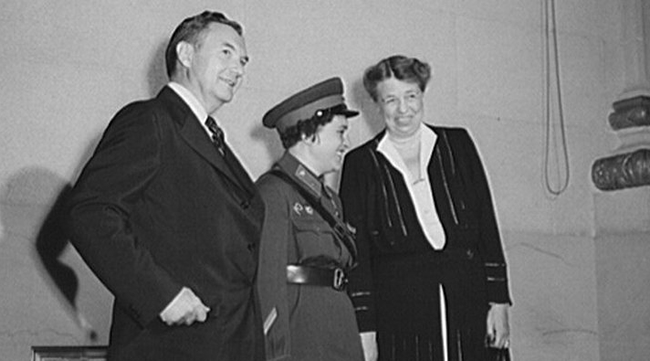
Have you ever been to Russia? If so, what were your impressions? Loves? Hates? Biggest surprise. Can you see how the country made Mila the woman she was?
I have never been to Russia, so I can’t speak with authority about what it is like today. My interactions with Russians have all been delightful. It’s a country with a great deal of brutal history, but it has produced phenomenally tough people, and I can absolutely see how that influenced Mila’s character.
Why do you think you write historicals?
My librarian mother had a degree in ancient and medieval history, so as a child I was getting stories from history rather than fairy tales at bedtime. Julius Caesar crosses the Rubicon rather than the Three Little Pigs; Princess Elizabeth in the Tower of London rather than Rapunzel. As soon as I began writing stories of my own, it seemed very natural to gravitate toward the past.
I love your Whoops, My Mistake(s) page on your website. Did you have any challenges with historical accuracy with this novel?
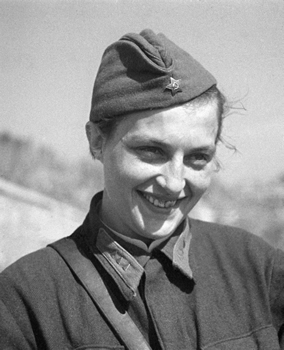
Since my primary source was Lyudmila Pavlichenko’s memoir, it was something of a delicate balancing act to interpret it both as real words from the mouth of a real woman—and to recognize that as a Soviet memoir, it has the stamp of the propaganda officers on it in places. For example, there’s a meeting with Stalin in that memoir that I decided not to include, because it looks like it didn’t actually happen: none of the writings by the other delegation members mention that meeting. So that is very likely a place where the USSR propaganda folks said, “Put in a flattering meeting with the Boss, please.” There were a number of times I had to make judgment calls along those lines: “Does this seem like something that really happened, or something that the propaganda people put in? Conversely, is there something missing from this narrative that the propaganda folks would have wanted left out?” That happened too—there is no mention in Lyudmila’s memoir of how Soviet officers used to shoot their own soldiers if they were caught retreating, yet we know that was common.
As a former military spouse like yourself (Marine Corps), I sometimes think that the spouse can feel the same overwhelming sense of patriotism and call to serve as the active-duty servicemember. That desire can present itself as an interest in military or espionage thrillers, for example. Do you think your proximity to the military helped cultivate your interest and desire in writing about women who felt that same call to duty and were able to serve their country?
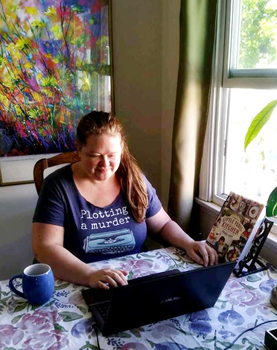
I’ve known and befriended lots of former and current military personnel through my husband—including many military women. They’re such a tough bunch: cynical, often quirky, impossible to shock or out-drink, usually with a pitch-dark sense of humor. They also often carry trauma with them, especially the ones who have been in combat. It’s left me with a profound interest in and empathy for how war changes people. How do men and women in combat endure what Lyudmila called “the baptism of fire”? Even more, how do they cope afterward with the subtler stress of re-entry into normal life? What lies behind those physical, mental, and emotional battle scars? A military spouse stands on the sidelines of that fight, but the sidelines can be a good place to observe and study outside the fray.
Being from the South and having many military and law enforcement men in my life, I’ve grown up around guns. So I appreciate the detail and familiarity you had surrounding the weapons in this book. Tell me a little about how you made sure you got it all right. And do you shoot?
Lyudmila’s memoir had a lot of technical detail about the weapons she worked with, so I pulled a lot directly from the source. I shoot a bit myself, on and off, though I’m no expert markswoman—for the purpose of this book, I did acquire a WWII-era Mosin Nagant with PE sights, which was the rifle Lyudmila most commonly worked with. (Millions were made, so many are still available today, thank goodness for my research.) That immediately gave me a better sense of how heavy the weapon and all its gear was, how the bolt could be operated by someone in heavy gloves (crucial in cold weather), how big the round is, and how much damage it could do to a human body. But I don’t consider myself a firearms expert by any means, so I relied on some terrific military and ex-military beta readers to help fine-tune all the gun details. They were fantastic.
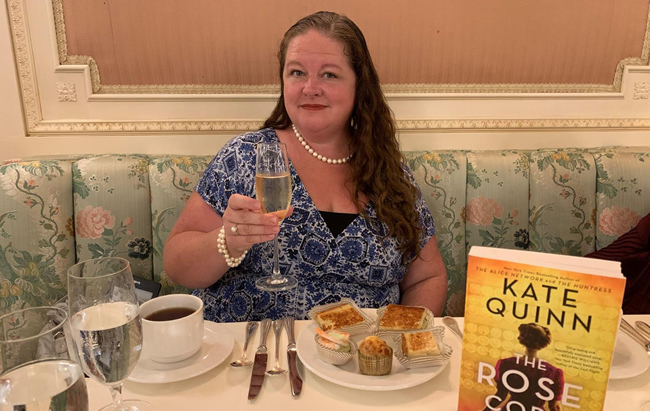
Mila is going through trauma as her story progresses. Do you think she realizes? Or do you think she just feels “tougher”?
She knew. Soviet memoirs tend to be short on emotional introspection, so she kept her tone pretty brisk as she recounted her wounds and losses. But she was absolutely aware of how much she was losing. After one particularly brutal bereavement in Sevastopol, she described her own grief, her initial inability to go back to shooting, and then the way she lost herself in the fight as a way of numbing her pain. She might not have called it PTSD or trauma, but she was certainly experiencing it—even if her way of dealing with it was often “toughen up and get on with the job at hand.”
How much literary license did you take with this true story?
Most of the events that happen to Mila in THE DIAMOND EYE come right from her memoir. I did ramp up the role of her first husband, whom she very deliberately leaves out of her memoir (her dislike of him comes through loud and clear in all the things she doesn’t say). I introduced the man who would become her last husband as a character because we know he existed, but she is completely and very mysteriously silent about him, so I created a possible reason for why that would be. And I created the fictional subplot about an American assassination attempt occurring during her goodwill tour . . . though since FDR did survive at least one real assassination attempt while in office, not to mention a coup by American business magnates to oust him from the White House, I felt this was a reasonably plausible “what if” to add to the existing story of Mila’s journey to the US.
I was on Chapter 11 before I decided to google the real person. Seeing her images really brought the story to life. Did you feel that you were almost channeling her as you wrote? What do you think she’d think of your novelization of her life?
She certainly felt very real to me as I was writing—her voice was so vivid in her memoir, I felt at times like she was talking right into my ear. But I’m aware that my version is just that: my version. I’d love to have known the real Lyudmila so I could see how they matched up. I hope she would have liked my novelized depiction of her!
I read that she was one of 2,000 female snipers in the Russian army. So she wasn’t the only one! What made her special, stand out? Was it just the high number of kills?
Probably the high number of her tally. Also, she came relatively early in the war—her fighting was all done in one intense period of less than 18 months, and then she became an instructor. Thus her legend was allowed to stand: If she’d gone back into the fight, she probably would have been killed (about 1,500 of those 2,000 female snipers died in combat), and her legend would have turned into a propaganda victory for the Nazis.
Your book publishes at a precarious time with Russia invading Ukraine, and yet this story of a female Russian soldier and sniper is universal, is it not? What do you want readers to take away from your story and Mila’s life?
That none of us know what we are capable of until we are tested. Mila Pavlichenko didn’t want to be a sniper; she was a bookworm and a single mother who wanted to become a historian and build a good life for her son. But her country was invaded, and she faced a stark choice: if ordinary people like her didn’t fight, her son would grow up in the Hitler Youth learning to Sieg Heil, and she found that unacceptable. So she decided to fight, and the quiet library researcher found she had a warrior inside. In an ideal world, there would be no baptisms of fire: Mothers would raise their children in peace, and aspiring historians could finish their degrees without ever having to pick up a gun . . . but when the pressure is on, when danger raises the stakes, when war looms, everyone finds out what they’re truly made of. That’s what Mila’s extraordinary life showed me, and that’s what I wanted to make THE DIAMOND EYE about: an ordinary woman turned by pressure into a diamond. And how we all, within our ordinary lives, carry the same possibility inside.
